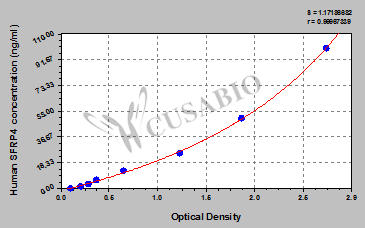This human SFRP4 ELISA kit employs the quantitative sandwich enzyme immunoassay technique to measure the levels of human SFRP4 in multiple samples, including serum, plasma, or tissue homogenates. It also uses the enzyme-substrate chromogenic reaction to visualize and analyze the analyte levels through the color intensity. The intensity of the colored product is in direct proportion to the SFRP4 levels in the sample and is measured at 450 nm through a microplate reader.
SFRP4 is expressed in the intestinal tract, endometrium, pancreas, stomach, liver, heart, and mammary gland. Ample studies have shown that SFRP4 regulates apoptosis and differentiation of tumor cells and is an important antagonist of the Wnt pathway. Loss of SFRP4 expression has been observed in most tumors, including ovarian cancer, malignant pituitary tumors, endometrial cancer, and acute myeloid leukemia. However, upregulation of SFRP4 is found in chemotherapy-sensitive ovarian cancer and breast cancer. Additionally, SFRP4 is implicated in many diseases including obesity, type 2 diabetes (T2D), and cancer.






